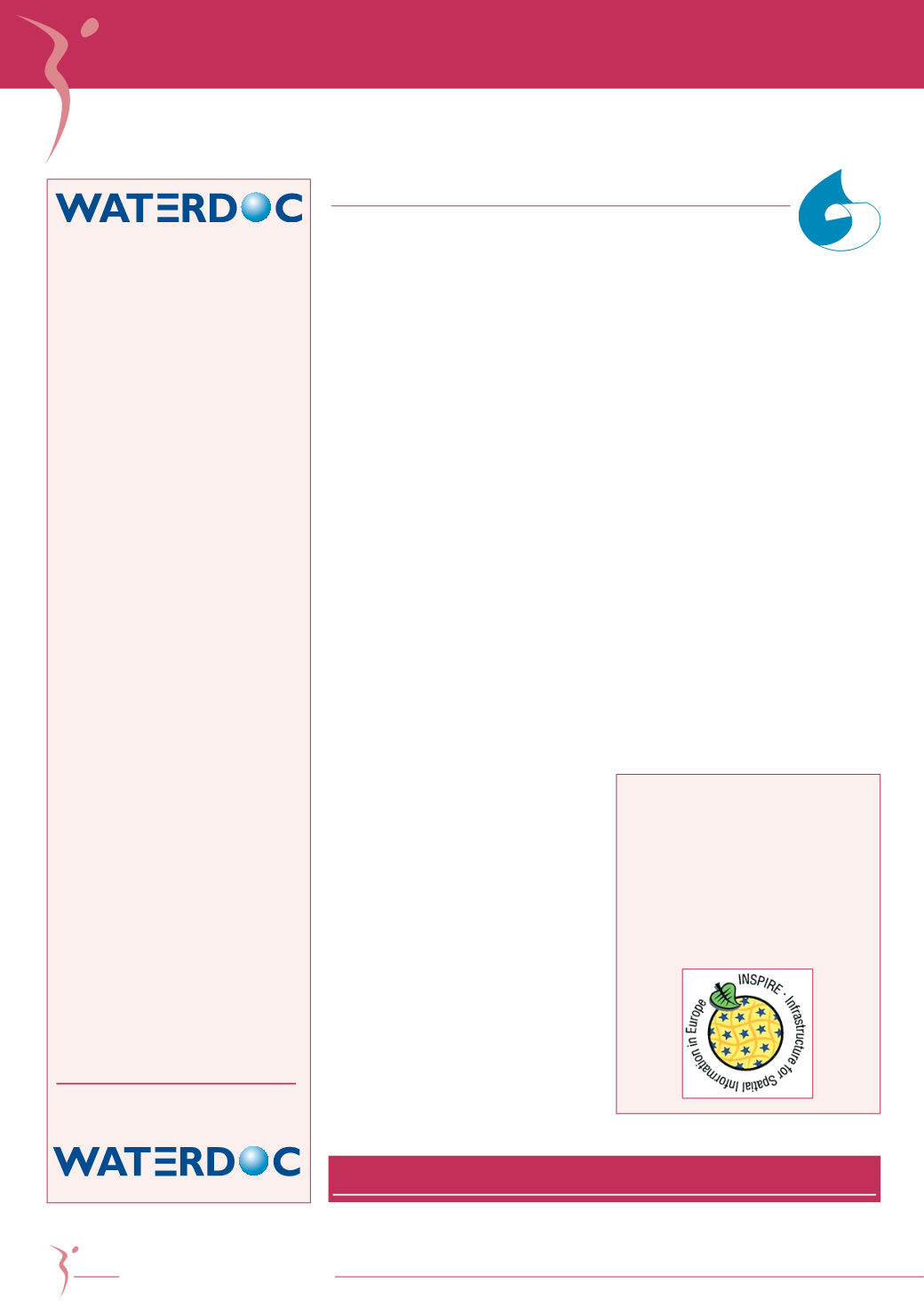
FRom one conTinenT To anoTHeR
EUROPE - FRANCE
The News N° 24 - March 2014
34
WATERDOC, the international docu-
mentation portal on water,
offers a
wide variety of services:
l
Access to the IOWater documen-
tary base:
nearly
254,000 refe-
rences
and full text documents,
60 %
of which are in English.
l
Tailored services on all kinds of
water issues
(non-point source pol-
lution, agriculture, aquatic environ-
ments, technologies, regulations,
socio-economics, etc.) for watch solu-
tions and informational research, draf-
ting of customized documentary
records and writing of summaries.
l
A flagship product: ”The IOWater
technical summaries”,
initiated in
1997 with AgroParisTech ENGREF
(National School of Rural Engineering,
Water and Forestry).
The collection
has now more than 180 titles.
Seven new titles were published in 2013:
l
Critical analysis of management stra-
tegies and mobilization of water
resources to adapt to climate change.
l
Integrated management of coastal
waters: Which French strategy?
l
Role of Hydromorphology in achieving
"Good Status".
l
Reform of the Common Agricultural
Policy for 2014-2020 and Water
Management.
l
Public procurement in the manage-
ment of water supply and sanitation
services in France.
l
Feedback on biogas recovery - techni-
cal and regulatory constraints.
l
Sustainable Cities - Water, energy and
urban planning.
To be found on the website:
4
”SANDRE”
The National Service for Water Data
and Common Reference Frames
Management is 20 years old!
Establishing a common
language on water
In 1992, the French National Water Data
Network (RNDE) was launched to make
water data available in a consistent
manner at all useful levels.
The
”SANDRE”
was established in 1993 to
simplify the exchange of these data between
the various stakeholders involved. For this, it
provides data dictionaries and exchange sce-
narios in electronic formats.
The ”SANDRE” thus offers a unique
exchange interface and meets the need
to establish a common language among
partners from the water world.
Given the proliferation of the information sys-
tems used and the growing need for know-
ledge,
the French Water Information
System (WIS) succeeded to the ”RNDE”
in 2003.
Through ”SANDRE”, many tools for sta-
keholders are then developed to make
their information systems interopera-
ble:
dictionaries and interactive exchange
scenarios, specifications for web multiple
domain services, reference data under ISO
9001 certification, a cartographic atlas, a
metadata catalogue, audits of computer sys-
tems, compliance labels, etc.
IOWater takes care of ”SANDRE” Techni-
cal Secretariat under its Multi-year Tar-
get Agreement with the French Natio-
nal Agency for Water and Aquatic Envi-
ronments (ONEMA).
Adapting
to the stakeholders’ needs
For example, each year in France, more than
ten million results of water analyses (drinking
water, surface water, groundwater, coastal
water, wastewater,…) are produced and
exchanged between analysis laboratories and
partners (ARS, DREAL, Water Agencies,
industrialists, …).
Due to these findings and on the request of
all the stakeholders,
IOWater,
as
”SANDRE”
Secretariat,
worked out, with the support of
the Ministries in charge of the Environment
and Health and ”ONEMA” and with the assis-
tance of a group of experts,
a standard for
data exchange: “EDILABO”.
Any laboratory must, from now on, be able to
receive a request for analyses and to provide
results in the
“EDILABO”
format and their
partners must change their information sys-
tems by developing an exchange interface in
conformity with the “EDILABO” standard. For
this purpose, they can have software certified
by
IOWater.
The ”SANDRE” is proposing more than
10,000 pages of data dictionaries and
exchange scenarios. It also displays
more than 13,000 files, which obtained
a compliance label, and more than
45,000 codified elements (taxons, subs-
tances, etc.).
4
SANDRE
Under the European INSPIRE Direc-
tive, IOWater, as ”SANDRE” Secreta-
riat, is a contributing member to the
writing of specifications on the ex-
change of water data.
A first compara-
tive analysis of
”SANDRE”
models to
those of INSPIRE was carried out. The
work of approximating these models will
take 3 years.
4


